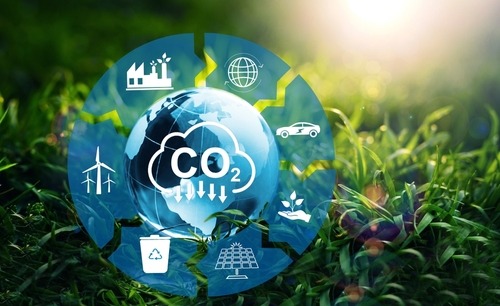NETL introduces new innovations to convert CO2 into useful products

The National Energy Technology Laboratory (NETL) introduced several innovations in 2023 to convert carbon dioxide (CO2) into useful products.
For example, NETL researchers grew versatile biocatalysts using microbes from a coalbed methane (CBM) well to convert industrial CO2 wastes and other single-carbon compounds into useful chemicals. These chemicals were used to manufacture biofuel, food additives and other products while reducing greenhouse gas emissions.
The microbes, from an Appalachian coal seam, generated a biocatalyst that outperformed other biocatalysts from microbes collected at oil and natural gas well sites and other locations.
“Microorganisms have a diverse metabolism and can drive many chemical reactions,” NETL’s Djuna Gulliver, an environmental engineer, said. “However, when they are grown and enriched in our laboratory, they can serve as highly capable tools that convert CO2 to acetate, an inexpensive chemical that has a wide range of uses.”
The biocatalyst converts the CO2 feedstock into what Gulliver calls “bio-acetate,” which can then be used to produce food additives, a pickling agent, a laboratory reagent, and other useful products. Further, it can be used as a feedstock to be converted into butanol, a biofuel. Butanol is often called a “drop-in fuel” because it can be directly substituted for fossil fuels without the need for engine modifications.
In addition, NETL researchers invented a new self-healing cold spray coating for use inside pipelines. The coating protects against corrosion, which can cause catastrophic events such as explosions and methane emissions.
“The invention consists of a new zinc-rich material that creates an effective protective layer which resists dissolution compared to existing zinc sacrificial coatings,” NETL’s Ömer Doğan, who worked on the innovation with NETL researchers Joseph Tylczak, and Margaret Ziomek-Moroz, said. ‘This new material can be applied to steel structures in a cold spray process to protect them from the effects of corrosion.”
Cold spray is a high-energy solid-state coating and powder consolidation process for application of metals, metal alloys, and metal blends for numerous applications. It uses an electrically heated high-pressure carrier gas, like nitrogen or helium, to accelerate metal powders through a supersonic nozzle for particle adhesion. The coating can be applied to the interior of a pipeline by using a robotic cold spray device.
